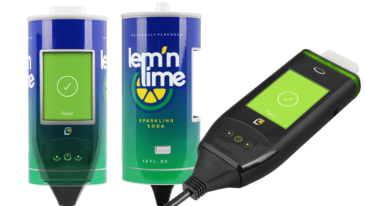
Will Failing An Ignition Interlock Be A Violation?
Ignition interlock devices (IID) are an increasingly important component of DUI laws and programs in many states. If you are required to install and use an interlock device, you are probably aware that there are penalties for violating any of the requirements related to the device’s use. These penalties function as a deterrent to attempts to bypass the device and ensure that program requirements are upheld at all times.
If you are going to have an IID installed, or already have one installed, you maybe curious what the consequences are of failing a test. Test failures can occurfor a wide variety of reasons, with the most common being the presence ofalcohol detected. Given that most people are largely unaware of what interlockdevices are, how they function, and how you can fail a test, it isunderstandable that there are a number of questions surrounding the use ofthese devices. In this article, we will address the common scenarios where aninterlock test is failed and what the possible consequences of a failed testare. We will also provide some insight into strategies you can implement toavoid failing tests entirely, including avoiding certain products and foods, aswell as following the proper procedures when using the device.
You may just want a simple answer to the question, “will failing an ignition interlock be a violation?”Unfortunately, the answer isn’t simple or black and white. There are a varietyof factors that must be taken into account, including what type of violation itwas, how often it occurred, and the policies and requirements of your specificprogram. The answers to these questions are largely specific to your uniquesituation. With this in mind, we won’t try to provide answers to specificscenarios, but rather we will provide a comprehensive overview of why IID testsare failed and how you can avoid a violation in the first place.
What is an Ignition Interlock Device?
If you aren’t familiar with what an IID is, an overview of the device and itsfunction provides a helpful base of knowledge. Ignition interlock devices are adevice that is connected to your vehicle’s ignition and is used to test youralcohol content. Essentially, an ignition interlock device is a breathalyzer. Inorder to start your car, you must blow into the ignition interlock device. Ifyour blood alcohol content (BAC) is lower than the threshold determined by yourprogram, the vehicle will start. If your BAC is higher than the threshold setby your program, your vehicle will not start.
There are a couple of things to note about IID’s themselves that you will becomefamiliar with if your program requires one. The first is that IID’s can only beinstalled or removed by a certified technician. The user may not tamper with oralter the device in any way once it is installed. A second point to note isthat you will have to regularly bring your IID equipped vehicle to a servicecenter in order to maintain compliance with your program and continue usingyour vehicle. This calibration is necessary in order to ensure that the deviceis operating properly, and typically only takes about 10 minutes.
Why are IID’s Used?
If you are required to use an ignition interlock device as part of your DUI program, you might be wondering why these devices are used. Simply put, IID’sare one method used to help ensure that repeat DUI offenders cannot use avehicle while under the influence. IID’s are also seeing a use for first-timeoffenders as a deterrent for repeat offenses. The dangers of drunk driving arewell known, and IID’s have proven an invaluable tool for reducing recurrentoffenses and thereby improving road safety. The National Highway Traffic SafetyAdministration (NHTSA) has found that the use of an ignition interlock device can both reducerecidivism rates for repeat and first-time offenders. Certain states, such asCalifornia, have implemented pilot IID programs in the past to evaluate theeffectiveness of these devices in deterring or preventing driving while intoxicated.[1]
Common Causes of a Failed Test
Now that we have an understanding of what an ignition interlock device is and whyit is used, let’s dive into what a failed test is and why they occur. Failedtests can occur for a variety of reasons. Regardless of the reason that afailed test occurs, the outcome will either be that the vehicle doesn’t start,or the device is locked out and the vehicle must be brought to a service center.
The two outcomes of failed tests are related to how the device functions. There aretwo types of tests that occur with ignition interlock devices; a test beforethe vehicle has started, and a rolling retest that occurs randomly once avehicle is in motion. If a test is failed before a vehicle has been started,the device will generally lock the user out for a few minutes before a retestis allowed. If a subsequent retest is passed, the vehicle will start. If afailure to pass a rolling retest occurs, or if a rolling retest is missed orignored, the device will enter a mode where immediate service is required. Ifthe vehicle isn’t brought to a service center immediately it may not subsequently start.
There are a variety of reasons either a primary or rolling retest might be failed.The ideal scenario is to avoid failing a test at all. This is not only becauseit may result in a violation that is reported to your supervising agency, butalso because a failed test or rolling retest can represent an inconvenience.You may not be able to start your car right away, or you may have to detour toa service center to have your device serviced. Either of these outcomes isundesirable, and both are largely avoidable.
Alcohol Detected
One of the primary reasons that tests are failed is because the presence of alcoholis detected. Of course, if you have been drinking alcohol the device isobviously functioning correctly and you should not be driving. In this case,the solution is simply to not drink before you drive. Assuming this isn’t thecase, there are a couple of other reasons an initial test might be failed. Ifyour device indicates that alcohol was detected but you haven’t been drinking,chances are it’s because you ate or used a substance that contains alcohol, orthe device is detecting alcohol in something nearby.
Once you start looking, there are a surprising number of things in our daily livesthat contain some form of alcohol. This can include commonly used items such asmouthwash, certain flavored beverages, bread and other foods that containyeast, and many others. If you are required to use an ignition interlockdevice, you must be mindful of using products that are labeled as alcohol-free.This can help you avoid failing an initial test. You will also want to be sureto avoid having anything in your mouth at the time of a test. Not only willthis make providing an adequate sample more difficult, but it can also resultin a failed test. Avoid chewing gum or food before taking the test, and be sureto rinse your mouth out with water and wait at least 3 minutes before taking atest after eating or drinking. If you have used any product that containsalcohol, wait at least 15 minutes before taking the test.
IID’s are sensitive devices, and the mere presence of alcohol can sometimes be enoughto trigger a failed test. You may not have thought much about the handsanitizer that you used to disinfect your hands before getting in your vehicle,but it is a likely culprit for a failed test. Things like hand sanitizer,deodorizers, air fresheners, and perfume and cologne can result in falsepositives by an IID. In order to avoid false detection with these items, besure to not use them in your car or before you are about to take a test. Don’t store items containing alcohol in the trunk or cab of your car.
Condensation
If your mouthpiece contains condensation or moisture you may fail a test. This is aneasy problem to address, and one you should be aware of from the outset so thatyou don’t trigger an avoidable failure. The first thing you should do is alwaysvisually inspect your device before using it to see if there is condensation inthe mouthpiece. If condensation is present, remove the mouthpiece and replaceit with a dry one. A tip is to keep a spare clean mouthpiece in your vehicle sothat this can be done quickly and easily, without impacting your schedule.
Missed Retest
Once your vehicle is started and you are on your way to your destination, you may berandomly prompted to complete a test at some point on your journey. This isknown as a rolling retest, and it is required that you comply with these testsin order to avoid any violation. Complying with rolling retests is simple. Whenyou are prompted to perform a rolling retest you will be notified and have aperiod of time to pull over to a safe place. Typically you have at least 3minutes to do so. Once you pull over, conduct the test as normal. Once you havepassed, you can continue on your way.
Will These Failures Result in a Violation?
The truth is, it’s difficult to broadly state whether a failure will result in aviolation. Typically, if the device detects the presence of alcohol you will begiven an opportunity to retest within a few minutes. A failure to pass thattest may result in a scenario where the device is locked out until it isbrought back to a service center, and the agency overseeing your program may benotified that a violation has occurred. Similarly, if you fail a rollingretest, your device will enter a “required service” mode and you will have tobring it to a service center. Failure of a rolling retest may also result in aviolation, depending on your specific program and it’s requirements.
So, what happens if a violation does occur? The answer is that it largely dependson your specific program and the state you reside in. As an example of theimpact a violation may potentially bring, we can turn to the pilot program instituted in the state of California from 2010 – 2015. Once acompliance violation has been reported the California DMV suspends theindividual’s enrollment in the IID program. This suspension stays in effectuntil the individual is recertified by a service center as being in compliance.Once enrollment in the IID program has been reinstated, the time period youmust stay enrolled in the program is extended in accordance with how long the suspension occurred.
Since no one wants to use an IID system longer than necessary, avoiding violationsshould be a high priority. One of the best ways to avoid non-compliance is toclosely read all of the requirements for your program, and be sure youunderstand how to properly operate your device. If you are enrolled in aprogram that requires the use of an IID, consider avoiding products thatcontain alcohol. Common culprits for a failed test include mouthwash, handsanitizer, air fresheners, and some food products and beverages. Also, keep inmind that rolling retests are not optional. You will want to be mindful of yourdevice to ensure you are aware when a rolling retest has been ordered, and thenpull off the road to a safe area to complete the test. Thorough knowledge of thedevice and your specific program, as well as understanding and implementingbest practices, you will be able to avoid violations.
Sources
[1]https://www.dmv.ca.gov/portal/wcm/connect/0a201372-f85a-4cca-8f92-fcbf34ea74c2/iid_pilot_program_q-a.pdf?MOD=AJPERES&CVID=


